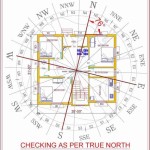Building Your Own Duck House: A DIY Guide
Providing a safe and comfortable shelter for your ducks is essential for their well-being. A well-constructed duck house not only protects them from the elements but also offers a dedicated space for nesting, resting, and laying eggs. If you're looking to create a custom dwelling for your feathered friends, building your own duck house can be a rewarding and cost-effective project. This guide provides a comprehensive overview of the key considerations and steps involved in designing and constructing a duck house.
1. Planning and Design Considerations
Before embarking on the construction process, it's crucial to carefully plan and design your duck house to meet the specific needs of your flock. Here are some essential factors to consider:
Size: The size of your duck house should be determined by the number of ducks you plan to accommodate. Allow approximately 2 square feet of floor space per duck, and ensure there's ample headroom for them to stand and move comfortably. Material: Choose durable and weather-resistant materials for your duck house's construction. Wood is a popular choice due to its affordability and ease of workability. Consider using treated lumber for longevity, especially if you're constructing a duck house in a humid climate. Ventilation: Adequate ventilation is crucial to prevent moisture buildup and maintain good air quality within the duck house. Include vents or windows on the sides or roof to allow for airflow. Nesting Boxes: If you want your ducks to lay eggs in the house, provide nesting boxes. The number of nesting boxes should be equal to or greater than the number of ducks. Each nesting box should be at least 12 inches wide, 12 inches deep, and 12 inches high. Predator Protection: To safeguard your ducks from predators, ensure the duck house is securely built with no entry points for animals. Consider using wire mesh or other materials to protect openings.
2. Construction Process
Once you have a clear design plan, you can begin the construction phase. The following outline provides a step-by-step guide to building a duck house:
1. Gather Materials: Assemble all necessary materials, including wood, screws, nails, roofing material, insulation, hinges, and paint. 2. Construct the Frame: Build the frame of the duck house using sturdy wood planks. Cut and join the planks to create the desired dimensions for the walls, roof, and floor. 3. Attach the Walls and Floor: Secure the walls to the frame using screws or nails. Attach the floor to the base frame, ensuring it's level. 4. Add Ventilation: Install vents or windows on the walls or roof for ventilation. You can use pre-made vent panels or create your own using mesh or wire screen. 5. Attach the Roof: Construct the roof and attach it to the frame. Consider adding a slight slope for water runoff. 6. Install Nesting Boxes: Attach nesting boxes inside the duck house, providing a comfortable space for ducks to lay eggs. 7. Insulate (Optional): If you live in a cold climate, consider adding insulation to the walls and roof of the duck house to maintain a comfortable temperature for your ducks. 8. Protect from Predators: Install wire mesh or other predator-resistant materials over openings, including vents and windows. 9. Add a Door: Attach a door to the duck house, providing access for you to clean and check on the ducks. 10. Paint (Optional): Paint the duck house to protect the wood and enhance its aesthetic appeal.
3. Finishing Touches and Maintenance
Once your duck house is built, there are some final touches and ongoing maintenance tasks to consider:
1. Add Bedding: Provide a layer of bedding material inside the duck house, such as straw, hay, or wood shavings. This will help keep the ducks warm and absorb moisture. 2. Provide Fresh Water: Ensure the ducks have access to fresh water at all times. You can provide a water dish or place a waterer inside the duck house. 3. Clean Regularly: Clean the duck house regularly, removing old bedding and droppings. This will help prevent the spread of diseases and parasites. 4. Inspect for Damage: Regularly inspect the duck house for any signs of damage, such as holes or loose boards. Repair any damage promptly to prevent problems with predators or weather.
By following these guidelines, you can create a sturdy, comfortable, and predator-proof duck house that will provide your feathered friends with a safe and enjoyable home for years to come.

Duck House Plans Howtospecialist How To Build Step By Diy

37 Free Diy Duck House Coop Plans Ideas That You Can Easily Build A Frame En Designs

19 Diy Duck House Plans Insteading

Duck House Roof Plans Howtospecialist How To Build Step By Diy

37 Free Diy Duck House Coop Plans Ideas That You Can Easily Build Building A Shed Roof

Duck Coop Plans Myoutdoorplans

How To Make A Duck House The Cape Coop

37 Free Diy Duck House Coop Plans Ideas That You Can Easily Build Ens Backyard Ducks

23 Duck House Plans With Tutorials That You Can Build In A Weekend The Poultry Guide

How To Make A Duck House The Cape Coop








